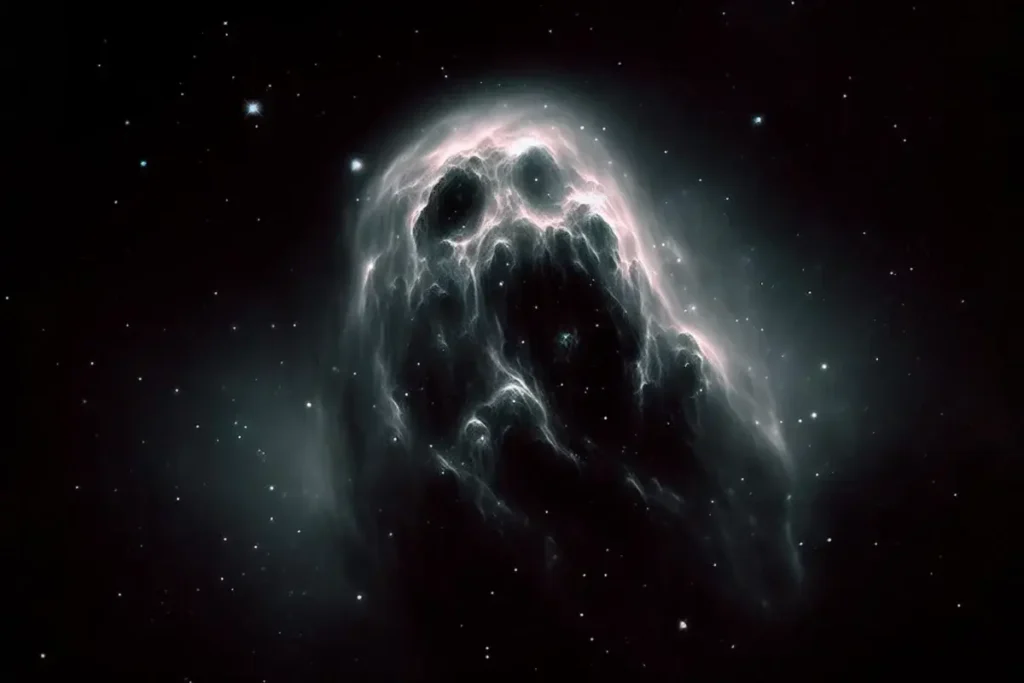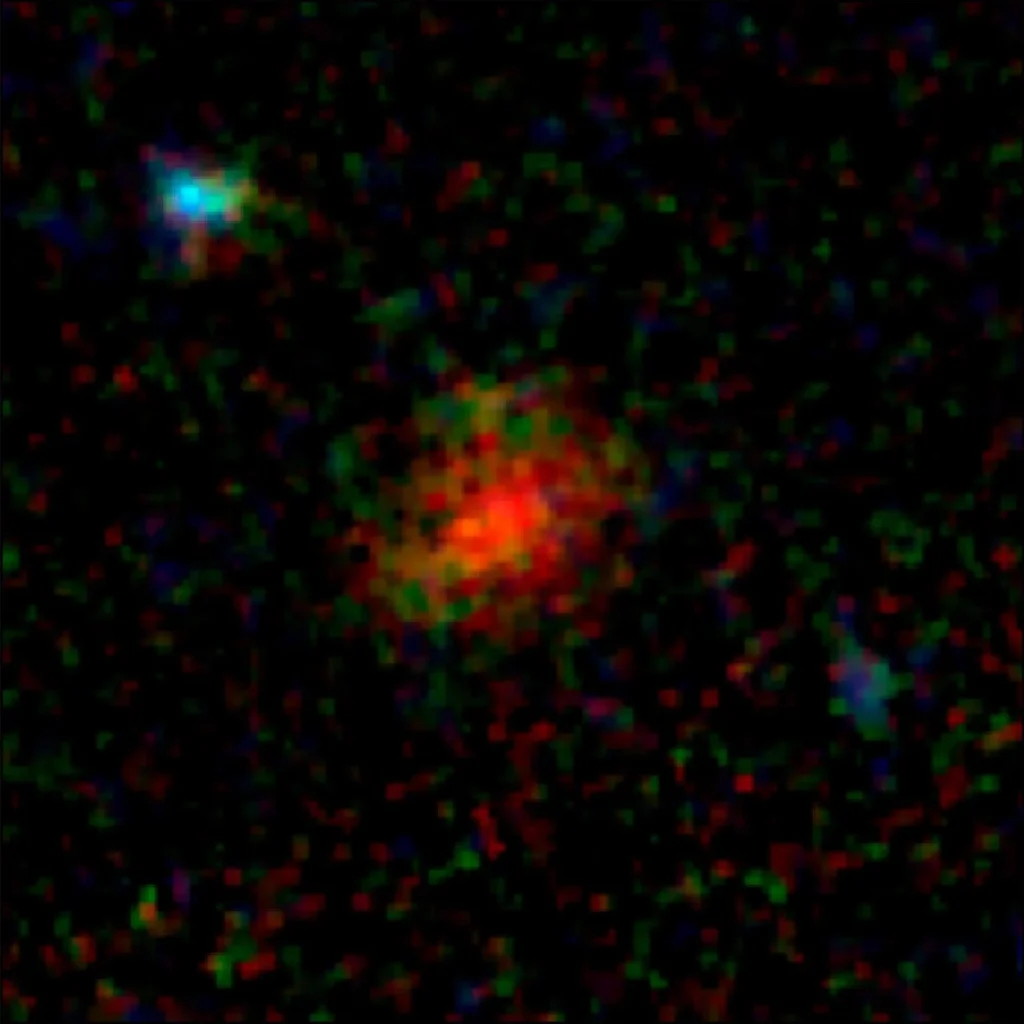NASA’s James Webb Space Telescope (JWST) has made a remarkable observation, capturing a “ghostly” galaxy known as AzTEC-1, which had previously eluded the Hubble Space Telescope’s detection.

This discovery is not just a testament to JWST’s advanced capabilities but also provides a crucial insight into the early universe, approximately 1 billion years after the Big Bang.
AzTEC-1, an extremely distant star-forming galaxy, has intrigued astronomers with its reappearance. Previously, it was only detectable by certain ground-based telescopes and remained invisible to Hubble’s observations. The JWST’s sensitive infrared instruments, however, have successfully identified this faint, dusty galaxy, revealing its true nature and significance.

The discovery of AzTEC-1 is reshaping our understanding of the early universe. It suggests that massive star nurseries, like AzTEC-1, could be three to ten times more common than previously thought. This revelation implies that the early universe was a much dustier place, challenging existing theories and models of cosmic evolution.
Jed McKinney, a postdoctoral researcher at the University of Texas and coauthor of the study published in The Astrophysical Journal, describes AzTEC-1 as a “real monster.” Despite its seemingly small and blob-like appearance, it is a powerhouse of star formation, birthing hundreds of new stars each year. The fact that such an extreme galaxy is barely visible, even with JWST’s advanced imaging, hints at a possible population of galaxies that have remained hidden from our view.
“This thing is a real monster,” said University of Texas postdoctoral researcher Jed McKinney, coauthor of a recent paper published The Astrophysical Journal, in a new press release. “Even though it looks like a little blob, it’s actually forming hundreds of new stars every year.”
The research, part of the JWST’s COSMOS-Web project, aims to map up to 1 million galaxies to better understand the earliest epochs of the universe. In their quest, astronomers specifically targeted AzTEC-1, a galaxy too faint for Hubble but previously identified as a dust emission blob by the James Clerk Maxwell Telescope in Hawaii. The JWST’s infrared capabilities allowed the astronomers to locate this familiar yet faint galaxy, marking a significant achievement in extragalactic astronomy.
McKinney highlights the limitations of previous observations, noting that our understanding of galaxy evolution has been biased due to the focus on less dusty, unobscured galaxies visible to Hubble. The JWST, with its ability to “pierce the thickest of dusty veils,” is set to revolutionize this understanding, potentially unveiling countless other galaxies like AzTEC-1.
This discovery is not just about spotting a distant galaxy; it’s about peeling back layers of cosmic history to reveal the conditions and processes that dominated the universe’s formative years. AzTEC-1 serves as a window into an era when the universe was teeming with star-forming activities, providing invaluable data for astronomers to decode the mysteries of cosmic evolution.
As the JWST continues its mission, it promises to uncover more hidden facets of the universe, offering glimpses into the unexplored and unknown. The detection of AzTEC-1 is just the beginning of a journey that could redefine our understanding of the universe and its myriad galaxies, taking us closer to unraveling the secrets of the cosmos.
Reference(s): Research Paper

